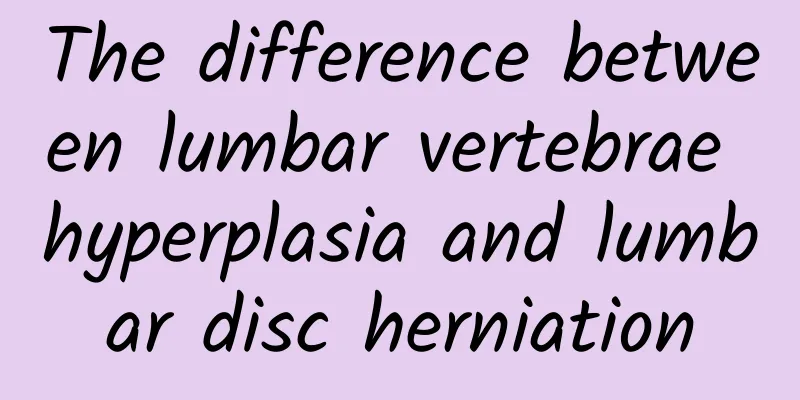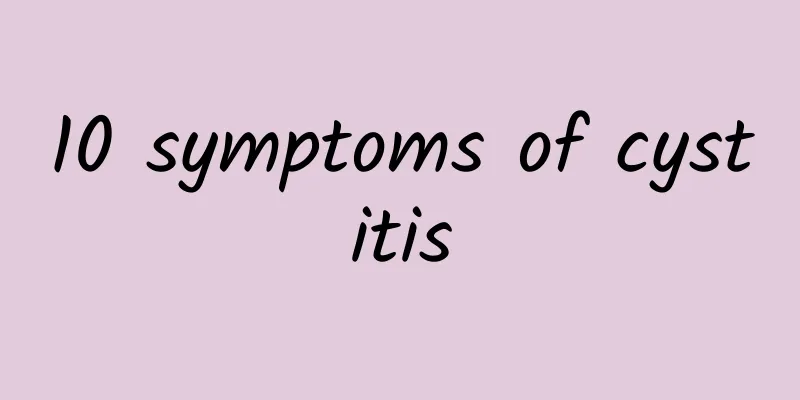The difference between lumbar vertebrae hyperplasia and lumbar disc herniation

|
For patients with lumbar disc herniation, it will cause pressure on the spinal cord or nerves in the lumbar spinal canal. Patients will experience low back pain accompanied by radiating pain in the buttocks or legs. Severe cases may also cause numbness of the outer instep of the calf. Therefore, the symptoms of lumbar bone hyperplasia and lumbar disc herniation are different. However, patients with lumbar disc herniation will experience low back pain and discomfort in activities, as well as radiating pain and numbness in the lower limbs. Patients will experience weakness and numbness in the lower limbs, unstable walking, and indirect limping. Lumbar bone hyperplasia and lumbar disc herniation are degenerative diseases of the lumbar spine, but there are essential differences between the two. What are the symptoms of lumbar bone hyperplasia? Generally speaking, bone spurs will not cause obvious symptoms. With age, the water content of the intervertebral disc gradually decreases, and the intervertebral height will be lost, which will lead to intervertebral instability. In order to compensate for this instability, the body will form bone hyperplasia, i.e. bone spurs, on the upper and lower edges of the vertebral body to increase the stability of the lumbar spine. Mild lumbar bone hyperplasia usually has no symptoms. Lumbar bone hyperplasia compresses the corresponding nerves or stimulates the corresponding muscles, which will have some clinical symptoms. Muscle stimulation can cause back pain and discomfort, and limited activity. At present, its treatment is mainly conservative treatment, such as massage, acupuncture, electrotherapy, and magnetic therapy to relieve back pain. Oral analgesics, drugs that promote blood circulation, and drugs that relieve sludge can also be used. What kind of exercise is suitable for bone hyperplasia? If the patient has lumbar vertebral bone hyperplasia, which leads to stenosis of the intervertebral space, protrusion of the nucleus pulposus, stimulation of the dura mater and nerve roots, and a series of nerve damage symptoms, the patient will experience radiating pain in the lower limbs, decreased skin sensation and other symptoms. In specific exercises, the patient can be asked to do the small swallow flying exercise. Patients with bone hyperplasia should choose bodyweight exercises, and the following exercises are mainly recommended: back muscle exercises can be performed while lying in bed, mainly four-point support exercises and five-point exercises with arched waist, and the lower limbs can cooperate with pedal wheel exercises and high leg exercises. Patients with knee bone hyperplasia generally cannot do strenuous exercise. They are suitable for slow walking, swimming and similar exercises, or playing Tai Chi, which can promote the recovery of knee bone hyperplasia. |
<<: Did you know that mastitis can also occur during the non-lactation period?
>>: What can't you eat if you have gallstones?
Recommend
What can the elderly eat to cure osteoporosis quickly?
Osteoporosis in the elderly can be accelerated th...
What causes anal fistula in men
Anal fistula in men is usually caused by anal gla...
Can I eat eel if I have breast cyst?
Patients with breast cysts can eat eels in modera...
What will happen if you don't go to the hospital for gallstone pain?
If the pain caused by gallstones is not treated p...
What causes finger pain?
Finger pain may be caused by trauma, inflammation...
How to change the dressing after perianal abscess surgery
The core of dressing change after perianal absces...
The most effective foods for preventing gallstones
The most effective foods for preventing gallstone...
Congenital spinal deformity surgery
The cost of surgery for congenital spinal deformi...
Clinical manifestations of 4-hydroxybutyric aciduria
4-Hydroxybutyric aciduria is a rare genetic metab...
Does Panax notoginseng have any effect on cysts?
Panax notoginseng cannot directly treat cysts, bu...
Do breast cysts need to be taken seriously?
Breast cysts need to be taken seriously. Although...
How many days after perianal abscess surgery is it possible to be discharged from hospital
Perianal abscess surgery usually requires 3 to 7 ...
Follow-up care for patients with gallstones
Maintaining good eating habits and a healthy life...
What foods are not suitable for gallstones?
Patients with gallstones should avoid high-fat, h...
What are the best medicines for hemorrhoids?
What are the best medicines for hemorrhoids? This...









